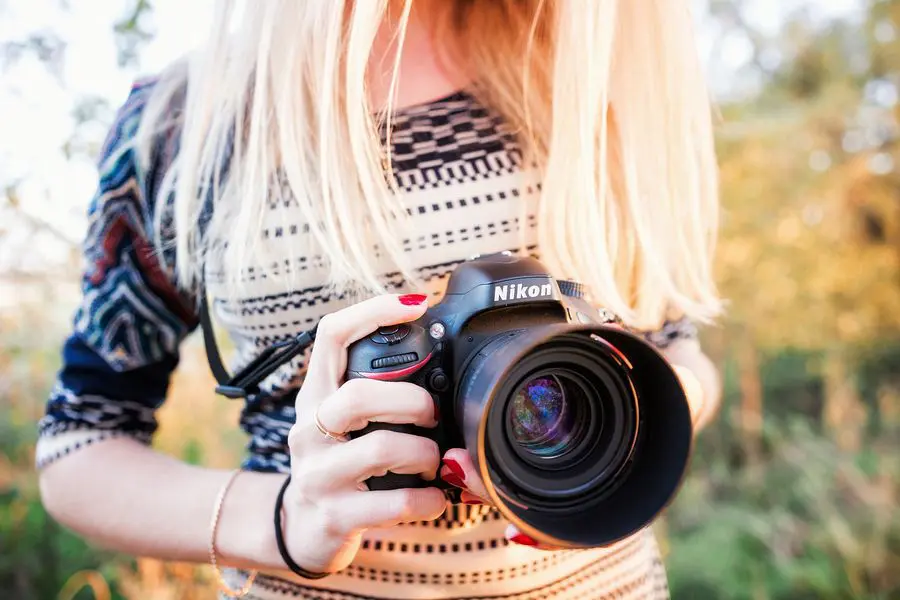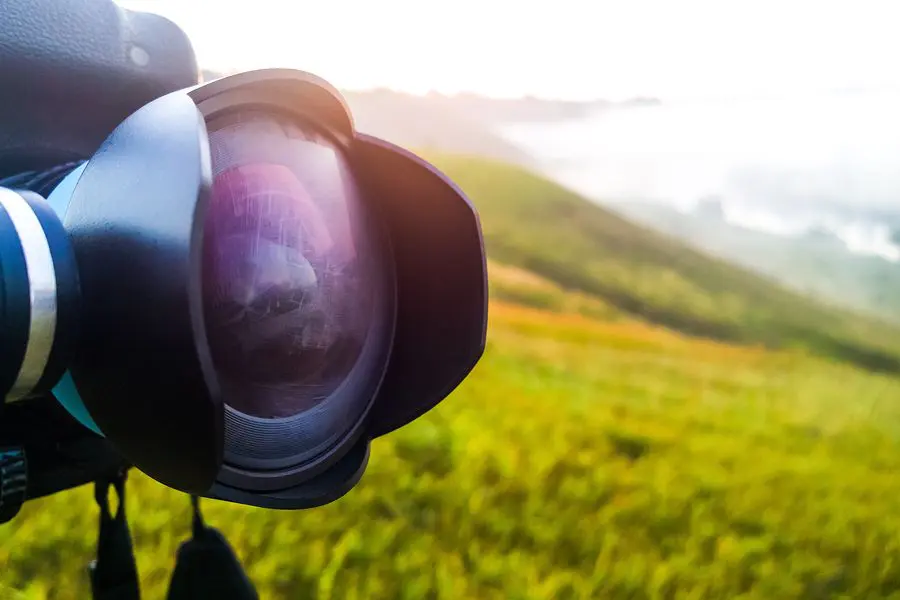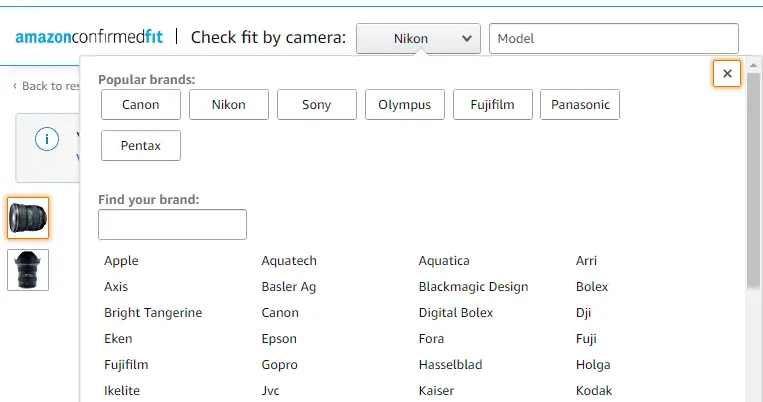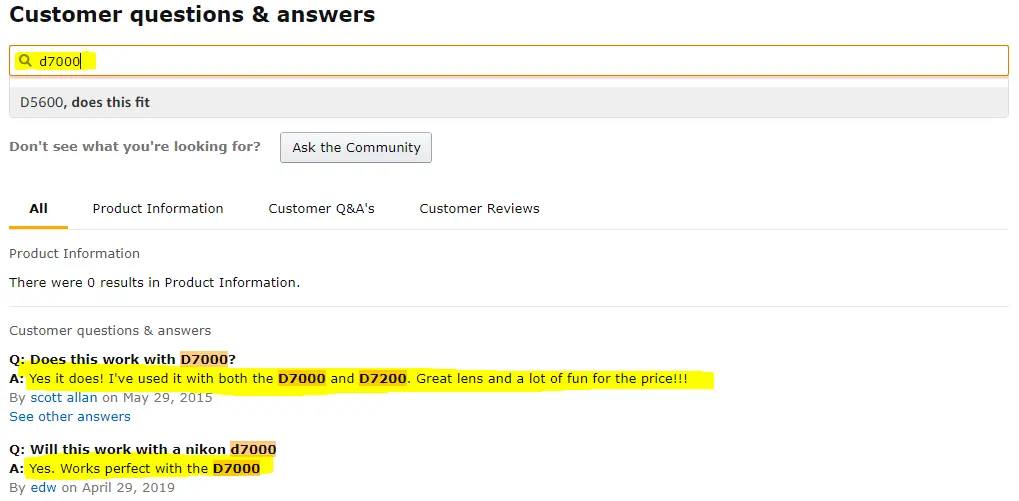Best Wide Angle Lens For Nikon D7000
Looking for the best wide angle lens for Nikon D7000? Here’s our top recommendations and a guide to help you find the most compatible lens for your needs.
Wide Angle Lens For Nikon D7000 Overview
- Best Nikon Zoom Wide Angle Lens
- Best Nikon Prime Wide Angle Lens
- Best Ultra Wide Angle Fisheye Lens
- Best Nikon Lens For Landscape Photography
- Best Lens For Astrophotography
- Why Do You Need A Wide Angle Lens?
- What Makes The Best Wide Angle Lens For Nikon D7000?
- How Do I Find Out If A Lens Is Compatible With My Camera?
- Cropped Vs. Full Frame
- How To Protect Your Wide Angle Lens
- How To Clean Your Wide Angle Lens
- How To Store And Travel With A Wide Angle Lens For Nikon D7000
1. Best Nikon Zoom Wide Angle Lens: Tokina 11-16mm f/2.8 AT-X116 Pro DX II
With a zoom lens, you can change your focal length by twisting the barrel of the lens. Unlike using a prime lens, you can keep your camera in one spot and change what’s in your frame. For example, if you’re photographing a wedding party, you’ll probably want a zoom wide angle lens to more quickly make cropping adjustments when working with groups of people.
The Tokina 11-16mm f/2.8 AT-X116 Pro DX II Digital Zoom Lens wins our vote for the best zoom wide angle lens for Nikon D7000. Here’s why:
- 11 mm minimum zoom allows you to fit more inside your frame.
- Less than half the weight of the Sigma 10-20mm f/3.5 EX DC HSM ELD SLD
- Smallest maximum aperture of the competition at f/2.8, allowing you to let more light into your sensor
- Less than half the cost of the Nikon AF-S DX NIKKOR 10-24mm f/3.5-4.5G ED
No products found.
2. Best Nikon Prime Wide Angle Lens: Nikon AF-S FX NIKKOR 20mm f/1.8G ED
Prime lenses have a fixed focal length. You can’t zoom in or out. You need to move your feet to change what’s in your frame. They’re light and compact. And their larger maximum aperture allows for faster shutter speeds and a tighter depth of field. For example, if you’re on a landscape sunrise photo shoot, you may prefer a prime lens.
The Nikon AF-S FX NIKKOR 20mm f/1.8G ED Fixed Lens wins our vote for the best prime wide angle lens for Nikon D7000. Here’s why:
- Widest viewing angle of 20 mm compared to the Nikon AF-S DX NIKKOR 35mm f/1.8G and the Nikon AF FX NIKKOR 28mm f/1.8G
- Small f/1.8 aperture making it perfect for low-light or night sky landscape photography
- Very light for it’s size at 0.78 lb
No products found.
3. Best Ultra Wide Angle Fisheye Lens: Nikon AF DX NIKKOR 10.5mm f/2.8G ED
We already know that a wide angle lens lets you fit more of the scenery inside your frame. But if you want to get an even wider perspective, your best choice of wide angle lens for Nikon D7000 is an ultra wide angle fisheye lens.
Fisheye Lens = Ultra wide angle of viewing, typically between 100 and 180 degrees of view. Creates a more circular rather than rectangular view because of barrel distortion. Great for capturing unique and creative ultra wide angle perspectives of architecture and buildings, especially in a crowded city landscape.
The Nikon AF DX NIKKOR 10.5mm f/2.8G ED wins our vote for the best fisheye wide angle lens for Nikon D7000. Here’s why:
- Wider 10.5 mm viewing angle compared to the Rokinon 12mm F2.8
- Small f/2.8G aperture allows lots of light into your camera
- Lightweight for it’s size at 0.66 lb
- Fixed focal length means clearer and crisper images
- Almost half the cost of the Nikon AF-S FISHEYE NIKKOR 8-15mm f/3.5-4.5E ED F/4.5-29
No products found.
4. Best Nikon Lens For Landscape Photography: Sigma 10-20mm f/3.5 EX DC HSM
Landscape photographers need wide angle lenses that offer the flexibility of adjusting focal length on the fly along with wide viewing angle capability. That’s exactly what the Sigma 10-20mm f/3.5 EX DC HSM provides. With its 10-20mm focal range, you’ll be able to dial in the focal length you need. And the HSM (Hyper Sonic Motor) keeps this lens super quiet during operation while you’re out in the field.
No products found.
5. Best Lens For Astrophotography: Tamron 10-24mm F/3.5-4.5 Di-II VC HLD
The best night sky photography captures as much of the sky as possible while producing a sharp image with little lens distortion. That’s why the Tamron 10-24mm f/3.5-4.5 Di-II VC HLD is our choice for the best lens for astrophotography. The flourine coating, which repels water and oils, and the water resistant construction also make this lens an optimal choice for nighttime conditions when dew is likely to form in the atmosphere.
No products found.
Why Do You Need A Wide Angle Lens?
Here are just some of the reasons wide angle lenses are ideal for landscape photography.
- Wide angle lenses have short focal lengths with a wide field of view.
- They allow you to fit more of the scene in your frame than other lenses.
- You can get much closer to your subject without excluding other background elements.
- They’re critical for night sky and astral photography, allowing you to maximize the amount of starry sky you can fit into your frame.
- They provide a very realistic perspective making the viewer feel like they could walk right into the scenery in your photograph.
What Makes The Best Wide Angle Lens For Nikon D7000?
In short, it all depends on how you intend to use your wide angle lens. Is it for landscape photography, buildings and architecture, group shots or night sky photography? Each of these scenarios will result in different needs. So let’s break down the main types of wide angle lenses for your Nikon D7000.
How Do I Find Out If A Lens Is Compatible With My Camera?
Easy peazy!
Here’s how to check wide angle lens compatibility in 2 simple steps:
- Click the link to any of the lenses above, or choose a lens from these Amazon search results.
- Choose your camera brand and enter your camera’s model into the “Amazon Confirmed Fit” bar near the top left of the screen.
NOTE: If your selection doesn’t generate any results, you can click the “answered questions” link just under the product title near the top right of the page.
That will take you to the “Customer Questions & Answers” section. Just type in your camera model number and…BOOM! You’ll get answers from real customers about whether this lens really fits and works on your camera.
Cropped vs. Full Frame
You’ve probably noticed the terms “cropped sensor” and “full frame” when searching for a wide angle lens for Nikon D7000. What do these terms mean?
They refer to the sensor size of the camera you own. A Nikon D7000 has a cropped sensor. This means the sensor is smaller and doesn’t capture as many pixels of image data as a full frame sensor camera does.
That’s not all bad, though. If you want just a little extra reach, a Nikon cropped sensor has a crop factor of 1.5x. This means any compatible wide angle lens for Nikon D7000 will have essentially the same field of view as a lens with a 1.5x focal length when mounted on a 35mm camera. So a 100mm lens attached to the D7000 will have roughly the same field of view as a 150mm lens on a camera a 35mm frame sized camera.
Lens manufacturers use different abbreviations to indicate camera compatibility.
If you see these abbreviations, it’s usually a compatible wide angle lens for Nikon D7000:
Nikon = “DX”
Sigma = “DC”
Tokina = “DX”
Tamron = “Di” or “Di-II”
How To Protect Your Wide Angle Lens
UV Filter
The best way to protect your lens while it’s mounted to your camera is a UV filter. This is a clear threaded filter that screws onto your lens. It doesn’t change the light coming into your camera’s sensor in any way. There’s no color cast to it.
No products found.
Besides protecting your camera’s sensor from harmful long-term exposure to UV rays, it’s your first line of defense against accidental bumps, scratches and even drops. And the best part is that UV filters aren’t a very expensive camera accessory.
I would much rather replace a cracked UV filter for $10 rather than a cracked lens for $1,000.
Lens Hood
The other thing I’d highly recommend is keeping the lens hood for your wide angle lens for Nikon D7000 attached at all times. The extra plastic sticking off the end of your wide angle lens will act as another barrier against table corners and door frames when you’re moving your camera around.
How To Clean Your Lens
Keeping your lens clean will ensure your images don’t end up blurry or have random specks you’ll have to remove in post processing. It doesn’t take much to maintain your lens.
Here’s what you need in a lens cleaning kit:
- Lens cleaning solution
- Lens cleaning pen
- Microfiber cleaning cloth
- Dust blower
No products found.
Fortunately this kit from Altura has it all bundled together for you. No need to piece all these items together.
How To Store And Travel With A Wide Angle Lens For Nikon D7000
It’s important to have both in-home storage and travel storage for your wide angle lens for Nikon D7000. You don’t need to spend a lot of money on a dehumidifying storage box or cabinet. Just use some low cost common sense protective measures to keep your lenses safe and sound.
Here’s what I recommend.
Protective Pouch
A good cushioned pouch will keep your lens from getting bumped and scratched while at home. It will also help minimize dust from building up on the glass (less cleaning!) and even getting inside the lens itself. I recommend this protective pouch set from Altura.
No products found.
Camera Backpack With Plenty Of Lens Storage
When you’re on the go, you want to make sure your wide angle lenses are well protected from the elements so nothing will physically damage them.
The best way to achieve this is by investing in a solid, spacious and well organized camera backpack. The one I recommend is the Lowepro ProTactic 450 AW Camera Backpack.
It’s got loads of space inside. Even room for a 15″ laptop! and it’s built for safety and security with a hard top for those accidental drops and back entry to deter would-be thieves.
No products found.
You won’t be disappointed with this camera backpack. And your lenses will thank you for giving them all enough room and safety in which to travel on those long landscape photography adventures.
What’s Your Go-To Wide Angle Lens For Nikon D7000?
I’d love to know your favorite wide angle lens for Nikon D7000. Share it in the comments below.
Happy Shooting!
Last update on 2024-11-21 / Affiliate links / Images from Amazon Product Advertising API







